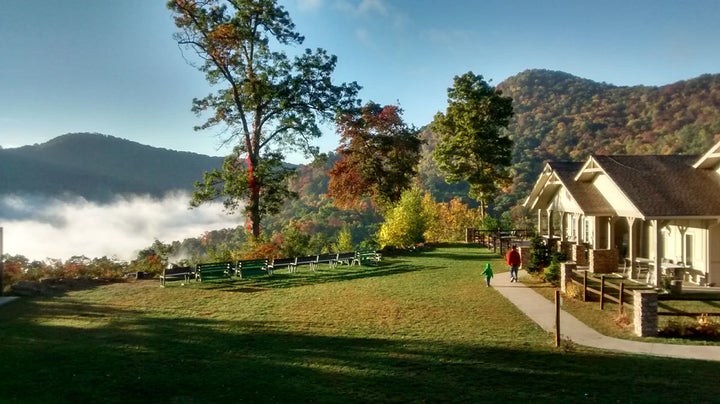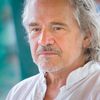
When I was a kid growing up in the suburbs of Columbus, Ohio, we lived in a tight-knit community. Every Sunday, friends and relatives would get together at someone’s house for a potluck. Someone might bring a baked ham, another potato salad or a dessert. By mid-morning, a huge table was loaded with all sorts of food. People would come and go as they pleased all day long. Kids would play outside and some adults would hang out in the kitchen. Others would show up for an early brunch, go play a round of golf, and come back for dinner. A handful of people would stay up late into the evening playing penny-ante poker. The big winner might go home with five dollars. I still remember the warm feeling of the street lights as we played outside until my parents were ready for us to go home. The wonderful feeling embodied by those Sundays permeated the community every day of the week.
It was also a time when neighbors looked out for each other. We had a neighbor who was a cabinet maker and who mistakenly gave too low of a bid on a project. Neighbors helped him out by going to his shop evenings and weekends, with no thought of charging a penny. It was a wonderful environment to grow up in.
The members of a healthy community share a similar identity. In times past, it would have been a similar ethnic background or religion. Today, by virtue of far-reaching communication through television, Internet, etc., many of those boundaries have melted away, leaving people with no sense of identity.
An example of this is from years later when as an adult, I moved to Florida where I ran a small animal veterinary hospital. I enjoyed my clientele quite a bit—lots of wonderful people. However, I did notice a rather interesting pattern. A high percentage of my clients had recently moved to Florida from up north. They still identified with their northern communities as home. Many of them spoke of how they were pillars in those communities and would reclaim that stature when they went back home to visit.
In Florida they let all of that go, not caring so much about how they dressed (flip-flops, t-shirts, and cut-offs), and had no interest in community activity. There seemed to be an inordinate amount of poor behavior: negativity and complaining in the local shops, poor driver etiquette, and a general social malaise. The area was notoriously rumored for voting down school funding and community services. A sense of community was sorely lacking.
Even the layout of the city lacked a community feeling. This area of Florida, booming at that time, was a sprawling mosaic of roads, strip-malls and shopping center sites. If they existed at all, town squares were run down and essentially abandoned. The whole area had an ‘every person for themselves’ sort of feel. I’ve seen a similar pattern in highly populated areas throughout the nation.
Numerous studies have shown the importance of community integrity, including decreasing crime, providing physical and mental health benefits, as well as delaying memory loss and improving health and mobility in the elderly. Such areas are known to thrive during hard economic times. People help out their neighbors as a matter of course. Tightly knit communities have a wonderful feeling of friendship and comradery, mutual respect, and love.
I initially learned how to build an ideal community decades ago when I was studying some ancient knowledge. This knowledge included town design (things like having a town square) which has a powerful effect on the psychology and harmony of the people of a community. It included not only the arrangement and design of buildings, but also the climate and slope of land. For example, it is not considered ideal to have the land sloping south because everyone bakes in the sun all day long.
I never thought I would use the ancient knowledge, but when I gave a series of lectures about that knowledge and we delved more deeply into it, we all became inspired and decided to build such a community. Many times, planned communities are centered around golf or tennis. Ours would be centered around a profound, yet practical, philosophy of community living, while honoring the unique nature and personal development of every individual. It would be an integration of ancient wisdom with modern day life. The humble pursuit of that understanding and knowledge is the very fiber of the bond upon which the community would thrive.
I am lucky enough to now live in such a community in the mountains of Western North Carolina. The feeling is wonderful. Casually stopping off at the community center to visit, going for walks, or even driving down the street is a heartwarming experience. We naturally greet one another with a friendly wave and a big smile that says, “It’s great to see you.” We care for one another like family. At one time, I thought it might be uncomfortable to be in such a tight-knit community, with everyone knowing your personal business. But it’s not like that. We all have a mutual respect for one another’s need for privacy and autonomy. We come to know who requires a little more distance and who enjoys a lot of social contact. We respect one another for who they are.
The children here are a delight. They enjoy playing throughout the community, visiting neighbors, and playing with the other kids. My children have commented through the years how happy they are to live here. You don’t need to read the psychological studies to know how healthy such a community is for everyone.
Imagine a neighborhood where essentially everyone is your best friend. You’re alone when you want to be, but never lonely. The atmosphere is never dry or sterile. It’s always rich and full. Hopefully the time will come when our nation returns to a menagerie of tight-knit communities. A healthy family dynamic is the central unit of a healthy nation, but the connecting link between a healthy family unit and a healthy nation is a set of healthy, thriving communities.
Michael Mamas is the founder of The Center of Rational Spirituality, a nonprofit organization dedicated to the betterment of humanity through the integration of ancient spiritual wisdom with modern rational thought. Dr. Mamas helps individuals and organizations develop a deeper understanding and more comprehensive outlook by providing a ‘bridge’ between the abstract and concrete, the Eastern and Western, and the ancient and modern. Connect with Michael Mamas on Facebook, Twitter, Instagram and Google+.
